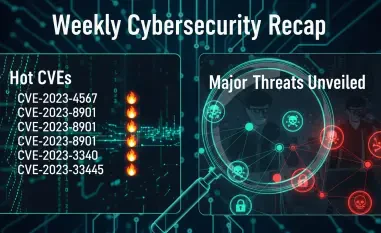In an era where digital transformation shapes every facet of business, the protection of end-user devices has emerged as a cornerstone of organizational resilience, especially when considering the devastating impact of cyber threats. Imagine a multinational corporation facing a ransomware attack that infiltrates through a single unsecured laptop, locking critical data and demanding millions in ransom. Such scenarios are no longer hypothetical but a stark reality, as cyber threats like malware, phishing, and unauthorized access continue to escalate. Endpoint security, which safeguards devices such as desktops, laptops, smartphones, and servers, has become an indispensable shield against these risks. With the global market for these solutions valued at billions and growing rapidly, the urgency to adopt robust measures is clear. This discussion delves into the driving forces behind this necessity, exploring how technological advancements, regulatory demands, and evolving threats underscore the critical role of endpoint security for modern enterprises navigating an increasingly complex digital landscape.
Rising Cyber Threats and Market Growth
The surge in cybercrime has become a defining challenge for businesses worldwide, pushing endpoint security to the forefront of corporate priorities. According to recent data, losses from cybercrime reached a staggering $16.6 billion in the latest reported year, marking a significant increase from previous figures. This alarming trend, driven by sophisticated attacks like ransomware and phishing, highlights the vulnerability of endpoints as entry points for malicious actors. The global endpoint security market reflects this urgency, with valuations projected to rise from substantial figures today to over $41 billion by 2032, achieving a compound annual growth rate of more than 6%. This growth underscores a collective recognition among enterprises that protecting devices is not just a technical need but a strategic imperative. As attackers exploit remote work setups and distributed networks, the demand for real-time threat detection and automated response systems intensifies, making endpoint security a linchpin in safeguarding sensitive data and maintaining trust in digital operations.
Beyond the raw numbers, the nature of cyber threats has evolved, necessitating advanced endpoint protection. Modern enterprises face risks from AI-driven scams and deepfakes, which can bypass traditional defenses with alarming precision. These sophisticated tactics require equally innovative solutions, such as endpoint detection and response (EDR) tools that leverage artificial intelligence and machine learning to identify anomalies swiftly. The financial stakes are immense, as a single breach can lead to operational downtime, legal repercussions, and reputational damage. Moreover, the proliferation of mobile devices and Internet of Things (IoT) systems in workplaces expands the attack surface, further amplifying the need for scalable security frameworks. As businesses integrate cloud computing into their operations, endpoint security must adapt to protect hybrid and multi-cloud environments, ensuring that every device, regardless of location, remains a fortified barrier against an ever-growing array of cyber risks.
Technological Advancements and Regulatory Pressures
Innovation in endpoint security technology offers a powerful countermeasure to the dynamic threat landscape, reshaping how enterprises defend their digital assets. The integration of artificial intelligence and machine learning into security tools has revolutionized threat detection, enabling systems to predict and neutralize risks before they escalate. These advancements facilitate faster identification of complex threats, providing a proactive rather than reactive approach to cybersecurity. Additionally, unified endpoint management (UEM) platforms streamline operational efficiency by centralizing control over diverse devices, from laptops to tablets. As cloud adoption accelerates, compatibility with multi-cloud setups becomes essential, ensuring seamless protection across varied infrastructures. This technological evolution not only enhances security but also aligns with the broader trend of digital transformation, where agility and adaptability are paramount for businesses striving to maintain a competitive edge in a connected world.
Equally compelling are the regulatory mandates that compel organizations to prioritize endpoint security as part of compliance frameworks. Stringent guidelines from authorities like the U.S. Department of Homeland Security, the UK National Cyber Security Centre, and India’s CERT-In impose strict requirements on data protection and breach prevention. Non-compliance can result in hefty fines and legal challenges, pushing companies to adopt robust security measures as a matter of necessity rather than choice. These regulations often vary by region and industry, adding layers of complexity to implementation but also reinforcing the importance of standardized security protocols. For enterprises operating globally, aligning endpoint security with these diverse mandates ensures not only legal adherence but also builds customer confidence by demonstrating a commitment to safeguarding sensitive information against breaches that could undermine trust and operational continuity.
Regional Dynamics and Competitive Strategies
Geographically, the endpoint security market reveals distinct patterns that reflect varying levels of digital maturity and threat exposure across regions. North America currently dominates with a significant market share, driven by advanced technological infrastructure and the presence of major enterprises that prioritize cutting-edge cybersecurity solutions. This region’s substantial investment in innovation and widespread adoption of security tools position it as a leader in the global landscape. In contrast, the Asia-Pacific region is emerging as a hotspot for rapid growth, with projections indicating a higher compound annual growth rate through 2032. Factors such as accelerated digital transformation, rising mobile device usage, and an uptick in cyber threats across emerging economies fuel this expansion. This disparity highlights a universal need for endpoint security while underscoring how regional nuances shape the adoption and prioritization of protective measures.
Meanwhile, the competitive landscape of endpoint security is marked by intense innovation as key players strive to outpace evolving threats. Companies in this space focus on integrating AI into their offerings, ensuring compatibility with cloud environments, and developing unified protection platforms to meet diverse customer needs. This strategic emphasis on advanced technologies reflects a broader industry trend toward anticipating rather than merely responding to cyber risks. By investing in research and development, these firms aim to deliver solutions that address the complexities of modern IT ecosystems, from remote workforces to IoT integrations. The fragmented nature of the market fosters a dynamic environment where continuous improvement is essential, pushing vendors to differentiate through scalability and adaptability. This competition ultimately benefits enterprises by providing access to state-of-the-art tools tailored to counter the sophisticated tactics employed by cybercriminals in today’s digital arena.
Building a Resilient Future with Endpoint Security
Reflecting on the trajectory of endpoint security, it has become evident over recent years that its role transcends mere technical defense to embody a foundational element of business strategy. Enterprises have grappled with unprecedented cyber threats, and those who invested in robust endpoint solutions often mitigated risks more effectively, preserving operational continuity amidst chaos. The market’s expansion, fueled by billions in valuation growth, mirrors a collective acknowledgment of this reality, as do the regional shifts that saw both established and emerging economies fortify their digital defenses.
Looking ahead, the path to resilience lies in the proactive adoption of cutting-edge endpoint security tools and adherence to evolving regulatory standards. Enterprises should prioritize scalable solutions that integrate AI and support hybrid environments, ensuring comprehensive protection across all devices. Collaborating with innovative vendors and staying abreast of regional threat trends will further strengthen defenses. As the digital landscape continues to transform, embedding endpoint security into core operations offers a strategic advantage, preparing businesses to navigate future challenges with confidence and agility.













